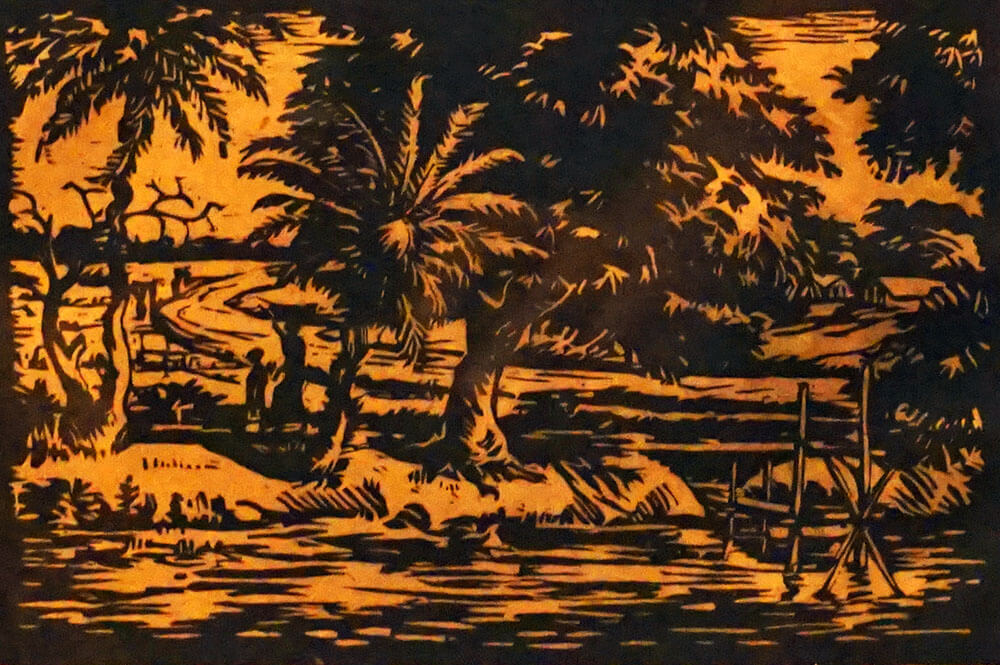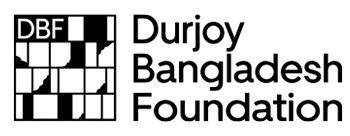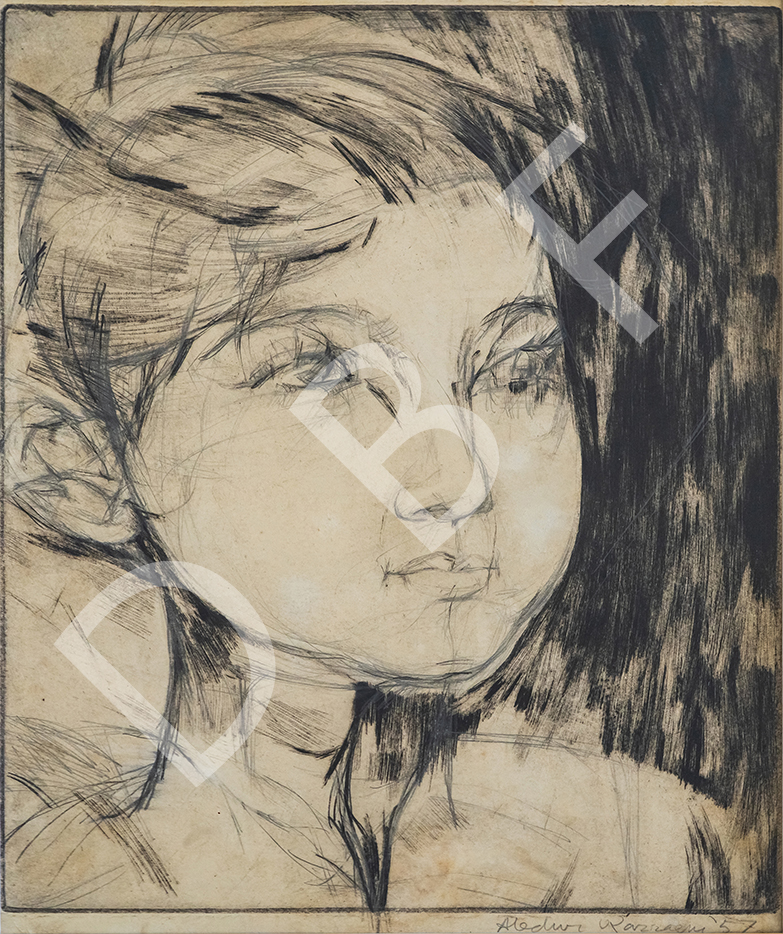In “Bridge on Iowa River” Abdur Razzaque seized the opportunity of painting the serene sight of the Iowa River. This 1957, ink and watercolor painting on paper is an ode to his days at the State University of Iowa. On a continuously fading background, he painted the river of Iowa with bold and purposeful brush strokes. His subject stands out against the dissolving colors. This semi-realistic abstract painting creates harmony between imagination and reality and takes us into the memory lane of the artist.
Abdur Razzaque, a legend in the art history of Bangladesh, painted “Bridge On Iowa River” while doing his masters in printmaking at the State University of Iowa. This captures his time and journey there. With minimal color and tools, he devoured the time in a piece of paper.

Abdur Razzaque
Abdur Razzaque (1932–2005), a Bangladeshi artist, is known as one of the significant artists of newly founded East Pakistan (now Bangladesh) in the 1950s and studied at the Art College (currently known as the Institute of Fine Art, Dhaka University). Abdur Razzaque was born at Shariatpur district and spent the early years of his life in Faridpur. He passed his matriculation exam from Faridpur High School, passed his higher secondary examination in Science group from Rajendra College of Faridpur with a second division, and later in 1949, he was admitted into the Government Institute of Arts, thus shifting from Faridpur to Dhaka city. In 1954 he graduated from the Institute of Arts with a first-class and served as an artist-cum-Museum Curator, in Malaria Research Institute of Dhaka for a year. A Fulbright Scholarship was offered to him by the State University of Iowa, in Fine Arts for post-graduate studies. Later the same university offered him an International Scholarship and Research Assistantship in the same field. Abdur Razzaq is known to be the first Bangladeshi who received a postgraduate degree in fine arts from abroad.
Bridge on lowa River


Village
“Village” is a 1950 woodcut art by veteran artist Abdur Razzaque, a person, famous for his incomparable contribution to Bangladeshi art. He translates our village life in his wood-cut art piece with the utmost ease. His concisely composed village portrays the simplicity of our countrymen, the lives living there. He introduced the lush leafage, green pastures, quiet riverine, working shepherds, and balanced this ever-expansive world by bringing the dramatic movement of light and shadow. He captures our villages in their simplest yet most luxurious form.
Through his skillful hands and attention to detail, he brings out the eternal imagery of Bangladesh. He knits the story of commoners, celebrates the serene beauty, and reclaims his identity.
Artist Art Style
Abdur Razzaque preferred mixed medium more than the others. But his mastery was equally exhibited through watercolor, etching, engraving, oil painting, etc. Even though he started as a painter, he later focused on sculpting and was the first to turn to this medium after the War of Liberation. He used different elements like steel, wood, cement, stone, iron, bronze, etc. in the making of his sculptures. Abstract expressionism was his preferred method to communicate with the spectators of his creation. He always wanted to portray the truthful aspect of nature, only by painting them in greater form than the reality truly is, by using different vivid and vibrant colors to show exclusively the colors only but not the shapes in detail.















